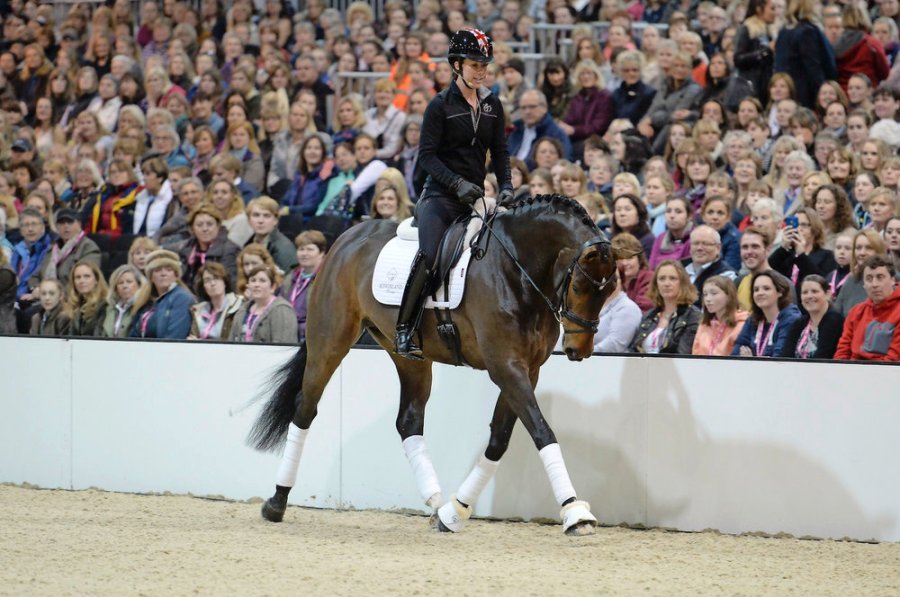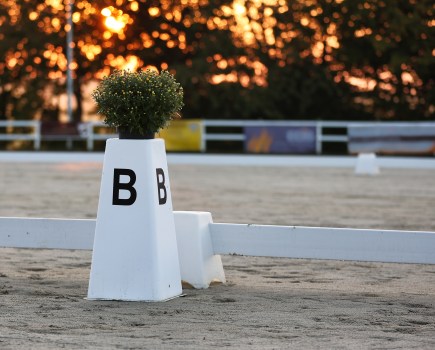Stretching at the start of schooling sessions helps your horse’s back and neck muscles warm up and encourages relaxation. “You’re looking for your horse’s neck and topline to stretch as far forward as possible,” explains Charlotte. “The area behind the saddle, should be loose, swinging and not tight. I spend 10 to 15 minutes in trot in this frame before moving up to canter.”
Working with tension
If your horse is spooky and tense it’s not always safe to start with a stretch. “I’d ride this type of horse up to the contact from the start,” Charlotte says. “I don’t want to be riding with longer reins when he’s not relaxed, as the last thing I want is for him to spook and me fall off. As you get further into your schooling session and your horse starts to relax, then allow him to stretch.”
Regular breaks
Young horses tire quickly so Charlotte suggests you keep schooling sessions short. “Reward your horse for doing something well with a short break. This also ensures he doesn’t become tight in his muscles,” she explains. “Walking for a few minutes lets him relax and get his breath back before you pick up your contact again and ask for a bit more work.”
Transitions? You can never ride too many of them!
Throughout any schooling session you should be riding hundreds of transitions, especially within the pace. For example, riding your horse forwards in canter and then asking him to collect a little teaches him to take more weight onto his hindlegs and develop self-carriage. Varying the rhythm stops the pace getting stale, and keeps your horse thinking about what he’s doing and listening to your signals.
Clear communication
Giving your horse clear aids will help your horse’s training progress. Charlotte explains that the general rule is to ride a hot horse with your legs on, and a lazy horse with your legs off his sides.
“Whatever your horse’s temperament, it’s very important that he reacts to your aids. He must go when you say – moving forwards willingly from a simple touch with your legs on his sides,” Charlotte says. “I see a lot of riders who are always squeezing with their legs and all that happens, over time, is your horse will become numb and less responsive to your legs. You don’t want to be constantly nagging; you want your horse to be sensitive to your leg aids. Ultimately, your aim is to do as little as possible and let
him do the work for you.
“It’s tempting to ride with a whip if your horse isn’t quick off your leg, but it’s too easy to become reliant on it, and you won’t get the same reaction if you use it regularly. Also, give rein and leg aids independently: using them simultaneously will confuse your horse – it’s like using the accelerator and brakes at the same time when you’re driving a car!”
Don’t miss the latest issue of Your Horse Magazine, jam-packed with training and veterinary advice, horse-care tips and the latest equestrian products available on shop shelves, on sale now.









